Welcome to week 2 of “Emergency Preparedness” 8 week series here at A Bowl Full of Lemons. This week I will show you how to store food and water in your Emergency Survival Station. To see the introduction to the series, visit my blog post (here). To re-visit week 1 storage, click here.
BASIC NEEDS
The second step to creating an Emergency Survival Station for your home – Food & Water. The purpose for this station is to have the means to survive an emergency for at least 72 hours, all in one place. In other words, you need enough food and water to last you at least 72 hours. Water is essential to life. Without it, you will not survive. So you need to know how much to store and how to purify it if you run out of “clean” water. You also need to store at least 3 days worth of “easy to prepare” food (with a long shelf life). Once you gather up your food and water supply, you are ready to move on to week 3.
EMERGENCY PREPAREDNESS:
WEEK 2 – “FOOD & WATER”
This week your goal is:
1. Stockpile water – 1 gallon/person/day (3 days minimum). FEMA suggests storing at least a 2 week supply.
2. Store regular bleach, medicine dropper or medicine cup in the ESS. Add bleach to a small bottle. (Keep in adult backpacks for water purification).
3. Add water purification tablets to each backpack.
4. Add coffee filters to each backpack.
5. Place one can opener in each backpack.
6. Store 3 days of shelf stable food in each backpack.
GETTING STARTED:
#1 – WATER
The most important item to store in your Emergency Survival Station is water. You cannot survive without clean drinking water. You need to store 1 gallon/person/day (3 days minimum). FEMA suggests storing at least a 2 week supply. The more water you stockpile, the better off you are. Make sure you rotate your water supply often. I keep a 24 pack of water bottles per person & 1 for pets. I also have 3 aqua containers filled, as well as a container that I can use to fill 100 gallons of water in my bathtub (here). We use this if there is a threat of a hurricane or bad weather. You never know when you will need extra water. Its always best to be prepared.
You can find the Aqua-Tainer (here).
#2 – WATER PURIFICATION
In an emergency, access to safe drinking water may become compromised. If the public water system becomes contaminated for any amount of time & you don’t have an emergency supply of water, you will need to know how to effectively treat water in order to remove pathogens for safe drinking. There are a few ways to treat it, but the two easiest purification methods are by boiling or chlorination. (My E-Book contains a water purification printable that you can place in each backpack for directions on how to purify water in an emergency).
TREATING WATER
Boiling – According to FEMA, boiling is the safest way to treat water. Bring water to a rolling boil for 1 full minute. Cool before drinking. Boiled water will taste better if you put oxygen back into it. You can do this by pouring it back an forth between to containers before drinking.
Chlorination – Use only regular household liquid bleach with 5.25 – 6.0 sodium hypochlorite. Add 16 drops (1/8 tsp) of bleach per gallon of water or 4 drops to 1 quart of water. By adding ascorbic acid (lemonade or kool-aid) to the treated water, it will convert the chlorine into tasteless chlorine.
#3 – CAN OPENER
If you include canned food in your 72 hour food kit, you need to have a can opener! Include 1 in each backpack, just in case you get separated.
#4 – 72 HOUR FOOD KIT
When packing food into your 72 hour kit, remember to use shelf stable, non perishable foods that will last a while. Fill out the 72 hour kit printable (in E-Book) and replace expired food as needed. A good rule of thumb is to check your kit every 6 months (the week of daylight savings times).
*Cooking methods will be discussed during week 5 (Supplies).
#5 – PLACE A 72 HOUR FOOD KIT IN EACH BACKPACK
I cannot stress enough about the importance of food and water in your Emergency Survival Station. If you have forgotten about the events (after Hurricane Katrina) made landfall in 2005, let me remind you. THOUSANDS were without food and water for days. Sanitation was gone. Help was no where to be found (for days). Natural disasters can happen anywhere, even in America. Be prepared.
MONEY SAVING TIPS:
Instead of buying individual water bottles, you can purchase gallon water for less than a dollar each. Every time you go grocery shopping, add 2-3 gallons to your list. (Make sure to rotate your water often). When purchasing food for your 72 hour kit, buy store brands instead of name brands. Lastly, purchase your can opener at the Dollar Store! These tips will save a lot of money this week.
“EMERGENCY PREPAREDNESS” E-BOOK
E-book for week 2 includes:
GRAB A BUTTON IF YOU ARE PARTICIPATING IN THE CHALLENGE
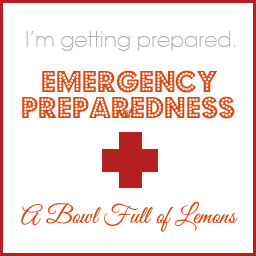
<div align="center"><a href="https://www.abowlfulloflemons.net/2012/11/emergency-preparedness-8-week-program.html" title="A Bowl Full of Lemons" target="_blank"><img src="https://www.abowlfulloflemons.net/wp-content/uploads/2012/12/imgettingprepared250.jpg" alt="Ask Anna" width="250" height="250" style="border:none;" /></a></div>
WEEK 2 SPONSOR – Heather Lorimer from “Shelf Reliance”
If you dont have time to put together your own emergency kit, you can purchase a preassembled kit at Shelf Reliance. Visit Heathers website to shop for Emergency Kits & Supplies, food storage & shelving. homeparties.shelfreliance.com
Tags: 72 hour kit, emergency preparedness, emergency preparedness 8 week series
Blog, emergency preparedness, food storage Posted in
37 comments

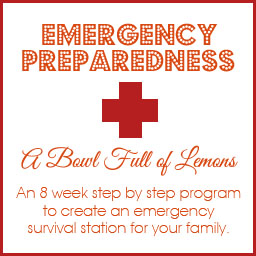



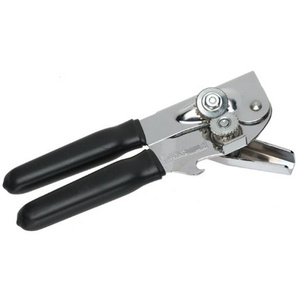




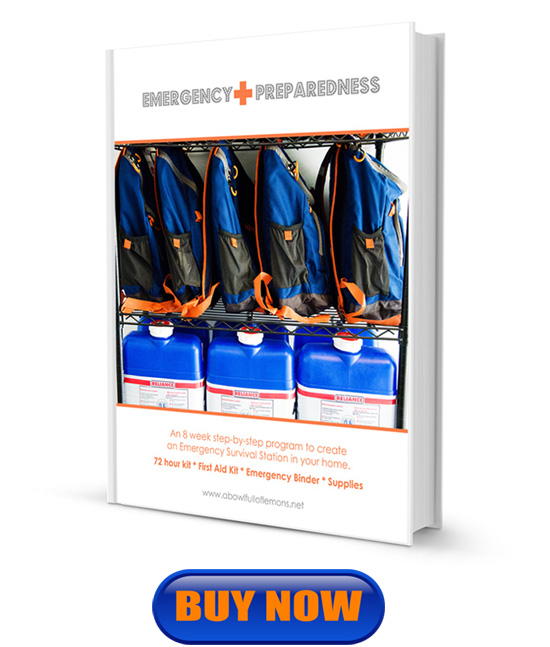
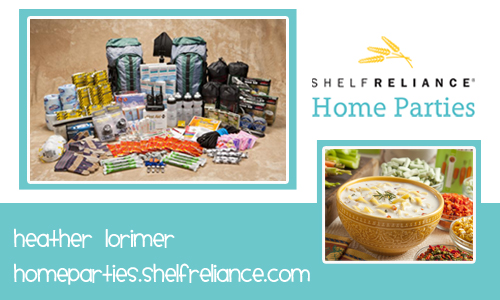





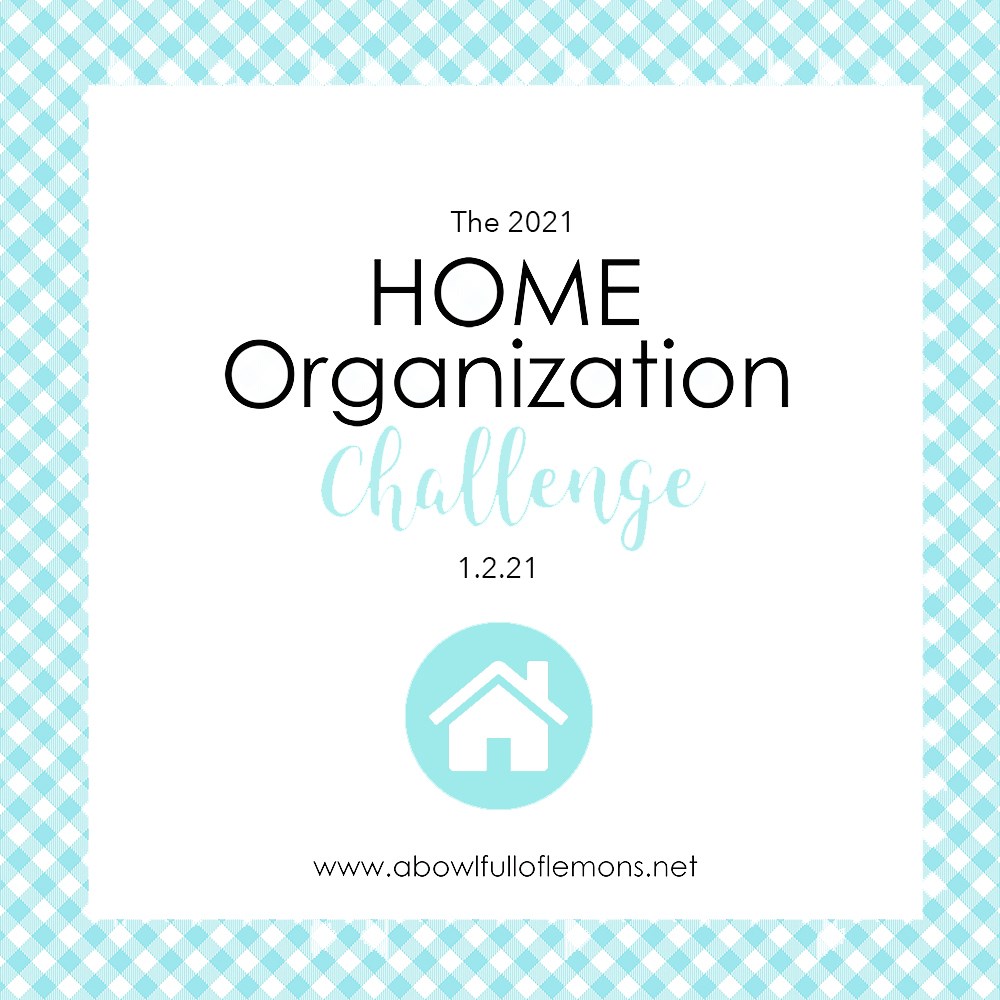
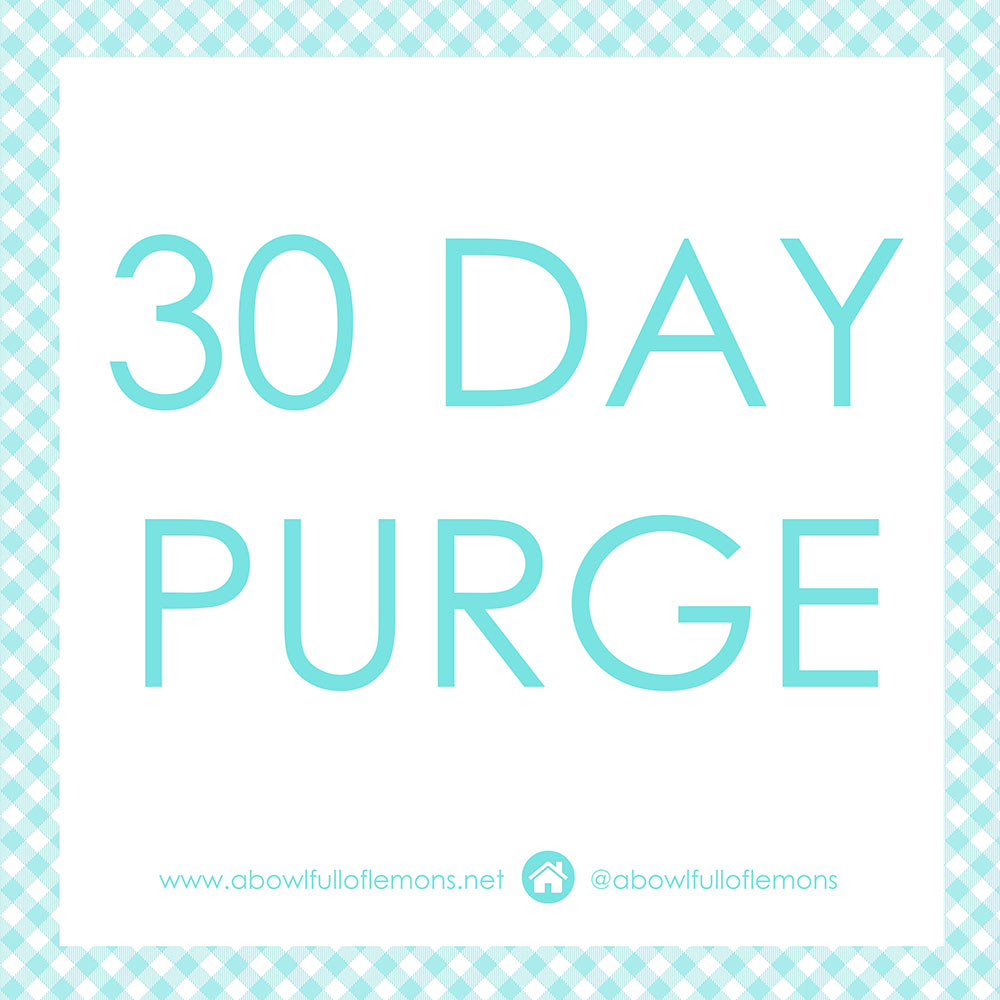
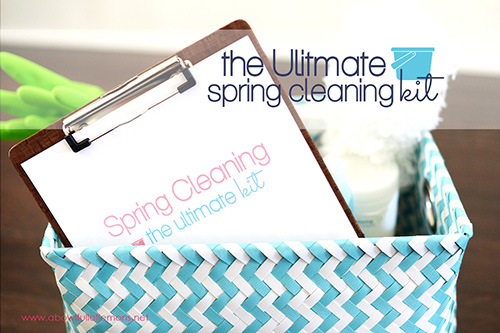
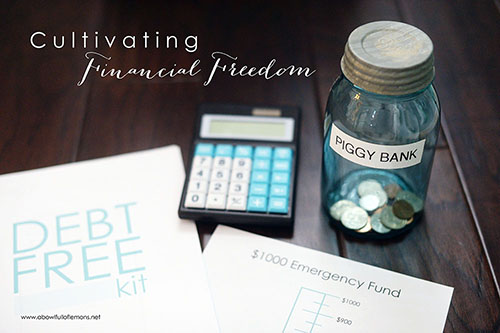
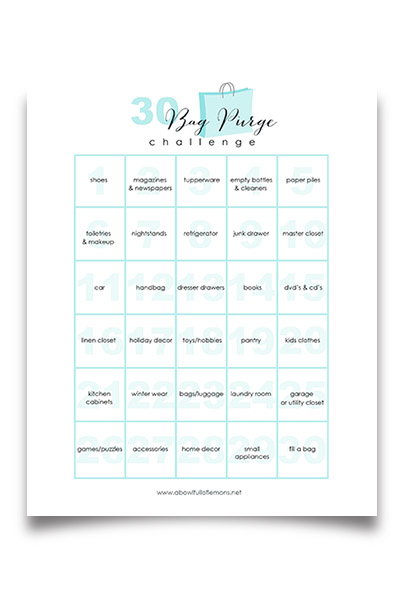
All very good considerations. A few things to note:
1. When they say stock regular bleach, they mean absolutely plain bleach, without additives or scents. And realize that bleach does begin to lose it’s effectiveness after 6 months even if unopened so be sure to rotate periodically. Writing the date you purchased it in magic marker is a good idea.
2. Water is used for so MANY reasons besides drinking, including cooking, washing hands, brushing teeth, even bathing in an emergency. You simply cannot have enough water but you do need to start somewhere. So, some bottled water and the Aquatainers are a good start.
3. Being able to add to your water supply at the last moment as the article states is a wise idea but remember that you can really ONLY count what you have physically stored. I suggest you do both as the article does.
4. Boiling is the best way to purify water but may be difficult to accomplish due to power or natural gas outages. You do need at least one alternative option such as bleach. Do not rely on coffee filters alone.
I keep plenty of suggestions myself here: rethinksurvival.com
You don’t need a full-sized can opener in each backpack. You can buy – cost about $1.00, a military can opener. I forget the name of it off-hand, but I have several of these. They fit on a keyring or lanyard and if you have a Swiss-type multipurpose knife, they usually come with a can opener as one of the blades. These don’t make the clean edge that a regular can opener make, but the trade-off is that it doesn’t weigh nearly as much as a regular can opener. If you ever need to use your pack to hike out with, the weight is going to count on everything! Especially with kids and people whom are not used to hiking or whom are not physically fit. When I was much younger and in the military, I took a survival school course and you’d be surprised at how heavy a pack gets and how quickly it happens – even for a physically fit person.
A good test is to take your completed pack, put it on (and then pick-up anything/one you plan on carrying and then hike a mile down the road and back with it. If you find you’re having to make a lot of stops, then the pack is too heavy. People thing that because they can pick it up in the house, they can carry it. So hubby’s pack weighs 50 lbs and he plans on carrying the toddler (and the toddler’s pack) while mom’s pack is 40lbs and she plans on carrying the baby. I suggest trying this plan out BEFORE the stuff hits the fan. Yeah, it works around the house or to and from the car, but not for a longer distance. Most people just cannot do it.
Also, weigh the completed packs (with any water you plan on carrying). You’d be surprised how much stuff weighs when placed together, especially when cans and consumer wrapping are included. (Water weighs 7 POUNDS a gallon!) Add in the “littles” and their packs and just the weight of kidlets and water is more than most women can carry any distance. (again, distance is the factor, not the ability to heft it.)
It’s amazing how fast the weight in your pack can add up, especially when adding in water and food! I’m still young enough that my mindset is “how much can I cram into my pack” regardless of weight? Sadly, it’s never enough.
It’s called a P-38.
It’s also called a John Wayne.
Darlene, thank you for sharing that…you are so right that we don’t think about how much weight all those things will add…I know now to rethink on what to add in my backpacks…there is a bleach in tablet form on the market…is that form a no…no?
A good idea would be to invest in a kids wagon to pull behind. With a cheap manual air pump for tires. Just a idea
P 38 can opener and the larger sized one is a P50 you can get them from Amazon they are part of my EDC along with a Leatherman multi tool and several other things
Not to be picky, but water actually weighs a hefty 8.34 pounds per gallon!!!
Our major initiative is to get home and stay home if a disaster arrives. We live is a fairly good location that has minimal natural disasters. They are still a possibility, but not as likely as some locations. We already are in process of stock piling our pantry (dp closet) for supplies, but we are still in the early stages as this can get costly even when purchasing wisely. We are still following your 8 week emergency plan (with minor adjustments as we deem neccessary). We had not started preparing very much for situations where we were outside of the home and must get back. We decided to use these Emergency Back Packs as our GHB (get home bags) and be in the corresponding vehicle that our family members are most likely to be in while away. If we are already home, then we can grab them from the vehicles and they can be our BOB (bug out bags). I realize this is only week 2 so I do not want to get ahead of the plan so that’s all I will say for now. Thanks for your step by step approach. A lot of people just do not know where to start so just don’t.
Where can i get the printsbles without buying the book
I do not sell them separately. Sorry about that.
Is each week a seperate $10 printable, ie 8 books for $80? Or is th e-book all inclusive ie 8 weeks for $10. Just a little confused.
I love this post but a quick question I wanted to run past everyone. What do you think of storing clean water in reused milk gallon jugs? Is there any reason that wouldn’t work?
Plastic milk bottles are created to biodegrade after a certain time. Many who have used them for water storage discovered that they split and leak eventually. 2 liter pop bottles won’t do that and work very well.
I have heard you really can’t get them clean enough. I have heard soda bottles are better if you choose the reuse route.
Hi, just wanted to remind folks to include their 4-legged family members in food/water stock. I found a zip-lock bag of dry food in an inexpensive food storage container works well for storage that (so far) has discouraged rodent snackage. The bag of food can be lifted out so the containers can quickly be pressed into service as water bowls.
I live in an apartment and have VERY limited space. What do I do? Plus, I live on Soc Sec only, and rarely have “extra” cash.
I get very discouraged when I read about all these people who are stockpiling. I live alone, except for 2 cats, and really need to be prepared to be self-sufficient. I am a very independent “senior”, and capable of caring for myself.
Suggestions? Advice?
One thing that works in small spaces is to get bed risers. I have seen them at Walmart. You can fit an entire year supply of food for one person under a single size bed. Small spaces in closets, backs of cupboards. When you go to the grocery store but two of things that you normally buy just one of.. There are many websites that teach about using coupons, and list deals that are at your store using coupons. Many coupons can be printed on-line. Hip2save.com is one of my favorite websites for couponing. I get lots of stuff free or very cheap this way.. Start small try to get enough for one meal extra, then a week, then three months ect.
Start small on the stock piling. LIke $5-$20 a week or whatever you can afford. After I started stockpiling food I found that it actually freed up a good portion of my regular weekly food budget – and I’m not even using coupons. As for limited space, bed risers do help. You may also want to try to utilize wall space or things that are “up” – like if you have any area between your kitchen cabinets and the ceiling for instance. You could also put shelves over the windows and store stuff there.
Another thing to consider it to save your gallon milk containers and simply fill them up with tap water. Rotate them out peridocially. Water is going to be your number one need in the event of a disaster or emergency…its amazing how quickly you can accumulate a nice supply one gallon at a time. 🙂
Do not use milk containers they break down and split, ergo water everywhere, before you know it. Use soda bottles rinsed out. I also gallon size bottle water (Ozarka) makes this round containers that fit into one another, that allows you to stack, without them readily falling. Another is refilling detergent bottles with bottles for cleaning up, since obviously you won’t drink that. Just having water to flush,etc, is a great comfort. that way you are saving your potable water to drink. Last idea: buy a solar stove that allows you to purify water by boiling using the sun.
Some really great tips. Thanks for sharing!
STORE THINGS UNDER YOUR BED. HAVE SOMEONE ELEVATE THE BED IF YOU CAN FOR MORE STORAGE.
I know you wrote this quite a long time ago, but if you are still having trouble getting your supplies you could try trading for them. Maybe you could put up a notice on a bulletin board in a local store to advertise your services. Perhaps you could spend one day a week reading, playing games and puzzles, and talking with someone’s small children. Maybe you could help them with school work or teach them a skill like fixing things, sewing, knitting, cross stitching, drawing, painting, playing the piano or other instrument, singing, canning, cooking, anything you know how to do. This list could work for older children, teenagers, and adults. Tell them instead of money you would just like them to bring you something on your list. It could be a few food items, a 5 gallon water jug filled and placed where you would like it, or a survival item, a small backpacking stove, a candle with a box of matches, two to four Coleman propane cylinders, a backpack they don’t need, a knife, a survival book, a few pots of essential medicinal herbs or other herbs, just something you need. Maybe they have extras. At any rate knowing they or their children are learning great skills while spending time with someone who is experienced with life and has much knowledge to pass on all in a safe environment has to be worth a few cans of food or ten to fifteen dollars worth of survival gear. Some other added benefits are they are helping someone who is also trying to help themselves, they can have some time to themselves if it is their child/children you are with, they are helping someone to feel useful and I’m sure they would appreciate the help, too, they gain a new friend or are strengthening the friendship they already have with you, and you are quietly setting an example to them and/their child(if they have a child and the child is their or knows about the exchange) and to the person(S) who post your notice and to all those who read your notice. You could ask around at church or post a notice on Craig’s list, or another local online forum. You could ask neighbors or friends, or the senior center or at a school or maybe at an event of some kind. Many people still care and want to help others. If you could do this for a couple of hours at a time and do it twice a week (maybe to two different people) then you could double your gains, or more if you could handle it. There are many people who don’t have grandparents or good grandparents to learn from and some people (me, when I was a teenager) are literally crying out to have someone to talk to and have someone listen to them. It is worth a few small items once or twice a week. I hope this really helps you or someone else out there. There is always hope and don’t forget you can take your plight to the Lord through prayer! Take Care. Get it done.
Really interesting post, particularly on how to chlorinate water.
I’d like to suggest including a recommendation for a product called The Water Bob. Its large plastic bladder that attaches to your tub faucet and holds up to 100 gallons of fresh water http://www.waterbob.com/Welcome.do;jsessionid=A6E7298BB07B2306E82001F2436E3010.
I have and recommend keeping a couple of WaterBobs for the bath tubs. They are cheap and do not take up much storage space (smaller than a shoe box). http://www.waterbob.com/ I live in FL and deal with hurricanes so filling our tubs with emergency water before a storm hits makes sense here. I like the idea of keeping the water clean and ready for use. Hope this helps!
The formula for using bleach to treat water may need to be adjusted.
From http://cfoc.nrckids.org/Bleach/Bleach.cfm: “… the concentration of bleach solutions sold in stores has changed in many areas of the country. The new bleach solution available in many stores is 8.25% sodium hypochlorite solution (higher than the formerly available bleach solution of 5.25%-6%). The 8.25% solution is being produced by both brand name companies as well as companies that produce generic products. Several companies have communicated to us that they have discontinued manufacturing the 5.25%-6% sodium hypochlorite bleach solution and will no longer be available at many stores.”
Hi,
I have a question. You said you fill the large “blue” water containers. About how long does that “tap” water last
Another good way to keep clean without using precious water is to buy baby wipes. You can get a box of about 900 at Costco for around $20 or less. They come in smaller packs in a large box so you can add one package per back pack easily. I use these when camping in the desert for extended periods so I don’t have to use my drinking water for anything.
I think the admin of this web site is really working hard in favor of his
web page, because here every stuff is quality based information.
I made a backpack for each of the grandkids. Food, water, whistles etc. When they come to my house they like to put the packs on and go in the woods around my house. They use their whistles and flashlights (attached to a lanyard) to alert each other where they are. I hope to tent one night so they can get the feel of sleeping outside. Show them how to cook outside and how to live without electricity. It should be fun.
Great post! We are linking to this particularly great article on our website.
Keep up the good writing.
WOW just what I was searching for. Came here by searching for 72
hour kit